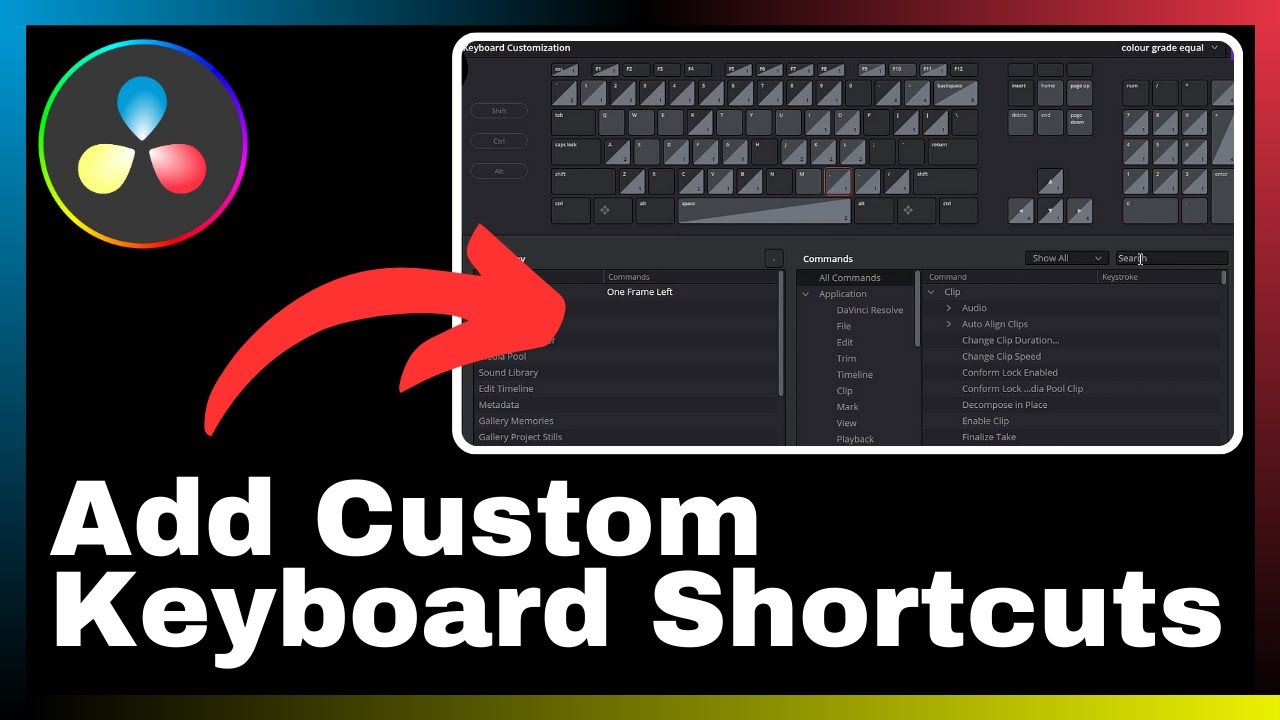In the world of video editing, the ability to zoom in and out of your video clips can create captivating visual effects. And with DaVinci Resolve, you have a powerful tool at your fingertips for achieving these effects with precision and ease. In this tutorial by Media Magnet Guide, you will discover techniques on how to effectively zoom in and out of your video clips using DaVinci Resolve. Whether you are a professional or a beginner in video editing, this tutorial will provide you with valuable insights and step-by-step instructions to enhance your editing skills. So, get ready to explore the possibilities and take your videos to the next level with the zooming capabilities of DaVinci Resolve.

Understanding DaVinci Resolve
DaVinci Resolve is a powerful and versatile video editing software that offers a comprehensive set of tools for professionals and beginners alike. In addition to video editing, it also provides features for color correction, visual effects, and audio post-production. With its wide range of capabilities, DaVinci Resolve has become a popular choice for projects of all sizes and complexities.
Brief Overview of DaVinci Resolve
DaVinci Resolve stands out among other video editing software due to its advanced color grading capabilities. It allows users to manipulate colors and create visually stunning effects. Additionally, it offers a wide array of editing tools, such as trimming, cutting, and merging clips, as well as a variety of transitions and effects to enhance the overall look of your videos. DaVinci Resolve also supports a wide range of video formats and resolutions, making it suitable for any project.
Key Features of DaVinci Resolve
- Color Grading: DaVinci Resolve is known for its powerful color grading tools, allowing you to create cinematic looks and enhance the visual appeal of your videos.
- Editing Tools: The software offers a range of editing tools, including trimming, cutting, merging, and adding transitions to your clips.
- Visual Effects: DaVinci Resolve provides a wide selection of visual effects that you can apply to your footage to add interest and creativity.
- Audio Post-Production: In addition to video editing, the software also offers tools for audio post-production, allowing you to adjust audio levels, apply effects, and mix soundtracks.
- Collaboration: DaVinci Resolve includes collaboration features that enable multiple users to work on the same project simultaneously, making it a valuable tool for team-based editing.
Importance of Zooming in and out in video editing
Zooming in and out is a fundamental technique in video editing that allows you to focus on specific elements within your footage or create dynamic visual effects. It adds depth and engagement to your videos, allowing you to highlight important details and create a more immersive viewing experience. Whether you want to emphasize gestures, facial expressions, or small objects, mastering the art of zooming can greatly enhance the storytelling and overall impact of your videos. In DaVinci Resolve, you can easily achieve zoom effects and create visually captivating content.
Setting up your Workspace in DaVinci Resolve
Before you start editing your videos in DaVinci Resolve, it is essential to set up your workspace to ensure a smooth and efficient editing process.
Launching the software
To begin, open DaVinci Resolve on your computer. Once the software is launched, you will be greeted by the splash screen, which provides quick access to your previous projects, new project creation, and various tutorials.
Opening or creating a new project
To open an existing project, click on the “Open Project” button on the splash screen and browse your computer to locate the project file (.drp). If you want to create a new project, click on the “New Project” button and enter a name and location for your project.
Familiarizing with the Interface
DaVinci Resolve has a sophisticated interface with multiple panels and tools. To navigate through the interface, you will find a toolbar at the top and various panels on the left, right, and bottom of the screen. The main panels include the Media Pool, Timeline, Edit, Color, Fusion, Fairlight, and Deliver. Take some time to familiarize yourself with the different panels and their functions. You can customize the layout and save your preferred workspace for future use.
Importing Your Video Clips into DaVinci Resolve
Once you have set up your workspace, the next step is to import your video clips into DaVinci Resolve for editing.
Navigating to the media page
To access the media page, click on the “Media” tab at the bottom of the interface. This will bring up the media pool, where you can organize your media files and prepare them for editing.
Adding files to media pool
To add video clips to the media pool, click on the “Import Media” button or use the keyboard shortcut Ctrl+I. This will open a file browser window from which you can select the video files you want to import. Once you have selected the files, click “Import” to add them to the media pool.
Dragging clips into the timeline
After importing your video clips, you can drag and drop them from the media pool onto the timeline. The timeline is where you arrange and edit your clips to create your final video. To add a clip to the timeline, simply click on it in the media pool and drag it onto the desired position on the timeline. You can add multiple clips and rearrange them as needed.
Basic Video Editing in DaVinci Resolve
Now that your clips are on the timeline, you can start editing them to create your desired video.
Overview of video editing options
DaVinci Resolve offers a wide range of video editing options, including trimming, cutting, merging, and adding transitions. These tools allow you to refine your footage and create a cohesive and polished final product. To access the editing tools, navigate to the “Edit” tab at the bottom of the interface.
Choosing a video clip to edit
To select a video clip for editing, simply click on it in the timeline. This will indicate that the clip is active, and any changes or edits you make will apply to that specific clip. You can select multiple clips by holding down the Shift or Ctrl key while clicking on the desired clips.
Marking In and Out points
In and Out points are essential for defining the portion of a clip that you want to include in your final video. To set the In and Out points, position the playhead at the desired starting point of the clip and press the I key on your keyboard to set the In point. Then, navigate to the desired ending point of the clip and press the O key to set the Out point. This creates a selection range that you can work with when editing the clip.
Zooming In on Video Clips
Zooming in on video clips is a powerful technique that enables you to focus on specific details within a frame and bring attention to important elements.
Selecting the zoom tool
To initiate a zoom effect, select the zoom tool from the toolbar. This tool resembles a magnifying glass icon. Once selected, the cursor will change to a zoom icon, indicating that you can now apply zoom effects to your clips.
Choosing the area to zoom in
Click and drag your mouse within the video frame to select the area you want to zoom in on. You can adjust the size and position of the selection to precisely target the desired area. As you make the selection, you will see a preview of the zoom effect in real-time.
Adjusting the zoom level
To control the level of zoom, use the sliders in the zoom tool settings. The sliders allow you to adjust the scale and position of the zoom effect. Experiment with different zoom levels to find the one that best suits your intended visual effect. You can also preview the zoom effect in the video viewer to ensure it meets your expectations.
Zooming Out of Video Clips
Zooming out of video clips can create intriguing visual effects and provide a wider perspective on the scene. It is particularly useful for revealing additional details or transitioning between different shots.
Selecting the zoom tool
Just like when zooming in, select the zoom tool from the toolbar to initiate a zoom out effect.
Choosing the area to zoom out
Click and drag your mouse within the video frame to select the area you want to zoom out from. As you make the selection, you will see a preview of the zoom out effect in real-time.
Adjusting the zoom level
Use the sliders in the zoom tool settings to adjust the scale and position of the zoom out effect. Experiment with different zoom levels to achieve your desired visual effect. Preview the zoom out effect in the video viewer to ensure it meets your expectations.
Using Keyframes for Zoom Effects
Keyframes are essential for creating smooth and dynamic zoom effects in your videos. They allow you to define specific points in time where the zoom level changes, resulting in seamless transitions and animations.
Understanding keyframes
In DaVinci Resolve, keyframes are used to record changes in parameters over time. When applying a zoom effect, you can set keyframes to define the starting and ending points of the zoom, as well as any intermediate positions or animations.
Adding and manipulating keyframes for zoom
To add a keyframe, navigate to the frame where you want the zoom effect to begin or change, and click on the keyframe icon in the zoom tool settings. This will create a keyframe at that specific time. You can then move to another frame, adjust the zoom level or position, and add another keyframe. DaVinci Resolve will automatically interpolate between the keyframes to create a smooth zoom effect.
Animating the zoom using keyframes
To create dynamic zoom animations, you can add multiple keyframes at different points in time. By adjusting the zoom level and position of the keyframes, you can create a sense of movement and depth within the frame. Experiment with different keyframe positions and zoom levels to achieve your desired animation.
Finishing Your Zoom Effect
After applying the zoom effect and adjusting the keyframes, it is important to make any final adjustments to ensure the effect looks polished and professional.
Final adjustments of zoom effect
Review your zoom effect and make any necessary adjustments to the zoom level, position, or timing of the keyframes. Pay attention to the overall flow and consistency of the zoom effect. You can also make additional tweaks to other parameters if desired, such as transitions, color grading, or audio levels.
Reviewing the zoom effect
Before exporting your video, carefully review the entire sequence to ensure that the zoom effect is cohesive and enhances the overall visual impact of the footage. Play the video and make note of any areas that may require further adjustment or refinement.
Exporting your video with zoom effect
Once you are satisfied with the zoom effect, it is time to export your video. DaVinci Resolve offers various export options to choose from. Navigate to the “Deliver” tab at the bottom of the interface to access the exporting settings. Configure the export settings according to your requirements, such as video format, resolution, and codec. Finally, click on the export button to generate the final video with the zoom effect.
Troubleshooting Common Issues
While working with zoom effects in DaVinci Resolve, you may encounter some common issues that can disrupt your editing process. Here are a few troubleshooting tips to help you overcome these challenges.
Addressing problems with zoom in/out
If you are experiencing issues with the zoom in or zoom out effects, such as unexpected behavior or inaccurate positioning, double-check your keyframes and zoom tool settings. Ensure that the keyframes are placed correctly, and the zoom tool parameters are adjusted accordingly. Sometimes, minor adjustments can resolve these issues.
Fixing zoom effect not saved
If you encounter a situation where your zoom effect is not saved or applied to the video, check if you have properly added keyframes and adjusted the zoom tool settings. Additionally, make sure that you have selected the correct clip or range for applying the zoom effect. Saving your project frequently can also prevent loss of work.
Resolving software responsiveness issues while zooming
If you face performance issues or responsiveness problems while applying zoom effects, consider optimizing the software settings. DaVinci Resolve offers options to adjust the playback resolution and caching settings, which can help improve the performance of the software. Additionally, ensure that your computer meets the recommended system requirements for smooth operation.
Conclusion
In conclusion, understanding and mastering zoom effects in DaVinci Resolve can greatly enhance your video editing capabilities. By knowing the key features of the software, setting up your workspace, importing video clips, and delving into basic editing techniques, you can lay a solid foundation for creating captivating videos. Zooming in and out on video clips adds depth, engagement, and visual interest to your footage, allowing you to effectively convey your message and create professional-looking content. With practice and experimentation, you can refine your skills and explore other editing techniques in DaVinci Resolve to further elevate your video editing endeavors. Remember to continue learning and stay updated with the latest features and tools to unlock the full potential of this powerful software.

























